I Heart… Metro 2033
by Chris
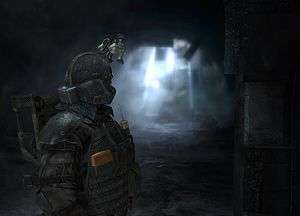 I run down a dark tunnel – the remains of our crumbling Metro system – away from the fanged beasts that pursue me. The entire area is bathed in poisonous gas – deadly air that has drifted in from the surface, threatening to erase the survivors from this once glorious city. I’m still running, but nearly out of breath; my gas mask fogs up as the failing filter struggles to recycle the green gas that blinds as much as it suffocates. They’re closer now, and I take stock of my weapons: a knife, a pistol with three rounds, an empty machine gun and a shotgun with one shell. No medkits, no filters, no grenades; nothing is left. The trip to Polis has been long and arduous, but I must keep going, for the sake of my home station.
I run down a dark tunnel – the remains of our crumbling Metro system – away from the fanged beasts that pursue me. The entire area is bathed in poisonous gas – deadly air that has drifted in from the surface, threatening to erase the survivors from this once glorious city. I’m still running, but nearly out of breath; my gas mask fogs up as the failing filter struggles to recycle the green gas that blinds as much as it suffocates. They’re closer now, and I take stock of my weapons: a knife, a pistol with three rounds, an empty machine gun and a shotgun with one shell. No medkits, no filters, no grenades; nothing is left. The trip to Polis has been long and arduous, but I must keep going, for the sake of my home station.
They’re upon me now, I can feel the hairs on the nape of my neck rise as I spin back towards them, pistol raised, the flashlight barely illuminating the tracks I have just run down, as the two beasts lunge for me. The closest one takes two pistol rounds to the face and slumps to the floor, but the second jumps to the wall, my third and final bullet missing, as he pounces on top of me. My gas mask cracks from the force, my lungs fill with noxious gas, and the creature brings its razor claws slashing down as I thrust my knife into its chest. He falls, defeated, as my vision blurs and I lay in the darkness, waiting for death to claim another soul.
Metro 2033, developed by 4A Games back in 2010, is a game that doesn’t hold your hand at any stage and it’s a better game for doing so. Based on the Russian novel of the same name, Metro 2033 drops you into the shoes of Artyom, a twenty-four year old survivor of a nuclear war that has ravaged Russia, leaving an uninhabitable surface and an over-crowded and dangerous underground Metro system, where the survivors of the war, and those born after – like Artyom – continue to try and survive.
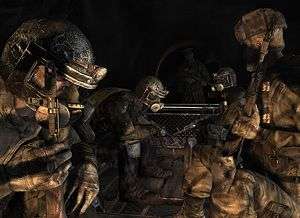 Although life in the Metro is pretty poor, with the constant threat of starvation, radiation poisoning, suffocation, or being executed by one of the governments (or by your fellow man for your last tin of beans), there is also the increasing risk posed by the mutant monsters, born from man’s attempts to bomb each other into oblivion. The irony that humanity’s last war created the very thing that threatens his life, daily, is not lost on me, nor on the characters that inhabit the world that you become immersed in. It is these characters who set Artyom on his journey, initially from his home station to Polis in order to gain help to fight The Dark Ones, a mysterious group of creatures that threaten not only his home station, but the last dregs of society as a whole.
Although life in the Metro is pretty poor, with the constant threat of starvation, radiation poisoning, suffocation, or being executed by one of the governments (or by your fellow man for your last tin of beans), there is also the increasing risk posed by the mutant monsters, born from man’s attempts to bomb each other into oblivion. The irony that humanity’s last war created the very thing that threatens his life, daily, is not lost on me, nor on the characters that inhabit the world that you become immersed in. It is these characters who set Artyom on his journey, initially from his home station to Polis in order to gain help to fight The Dark Ones, a mysterious group of creatures that threaten not only his home station, but the last dregs of society as a whole.
It doesn’t sound like the most original story does it? Evil threatening home? Untrained rookie ventures out mostly alone in order to save the day? Monsters, rival humans, creepy-goings on, oh my! No, Metro merely ticks all the boxes you would expect in regards to story and combat and, for a game that is correctly listed as a survival-horror first-person shooter, the importance of getting these areas nailed down, as a developer, cannot be underestimated. However, what takes a very linear experience and some pretty by-the-numbers combat and propels it from ‘all right’ to ‘excellent’ is the atmosphere.
To say that Metro is dripping with atmosphere would be the understatement of the decade. 4A Games have thought of almost everything that would allow you to become fully immersed in this post-apocalyptic hell and, without this level of immersion, Metro would have likely scored sixes and sevens across the board. The fact that it scored anything between sevens and nines is down to a number of things, the first of which is the setting. This is possibly the most authentic post-apocalyptic world I’ve existed in. The previous holder of that title for me was STALKER: Shadow of Chernobyl, and that had the advantage of being much more open than Metro is. Perhaps it is unfair to say it is better than Fallout and RAGE, as they are much more open in their presentation but, for an overall experience, Metro 2033 takes the gold medal.
The slowly decaying and barely liveable underground is perfectly juxtaposed against the (literally) frozen and equally frozen-in-time wastelands of the city above. The Metro system is old and not really fit for purpose when it comes to acting as a fragmented metropolis. People live in wooden shacks, held together with rotting boards and rusty nails. Rats and pigs act as food, cooked in fire contained in oil barrels, while a single man strums out a depressing tune on a guitar with only three strings. Children make chalk drawings on station platforms, of monsters and demons that keep them awake at night and threaten their families. On the surface, demons roam freely, controlling the once great city of Moscow. Winter is the only season on the surface, with snow covering everything that was stopped dead in its tracks when the nuclear blast hit. If the weather doesn’t get you, and you evade the monsters, flying or otherwise, then you’ll have to contend with the air, which is constantly threatening to choke you to death.
Back in the Metro, the various entrances in and out of every station – now looking more like slums than train platforms – are heavily guarded by men who both look scary and scared. They’re armed to the teeth with shotguns, pistols, knives, have bandoliers stuffed with ammo, and yet they’ll flinch at the first hint of danger, weapons raised, terror in their eyes. They know what lurks in the darkness, and what lurks in the darkness is both dangerous and ruthless.
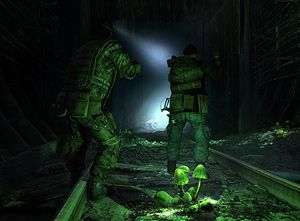 As I have previously mentioned, the game is pretty linear in its approach to letting you explore. You rarely go off the beaten track and, instead, head between stations trying to get to Polis in order to secure help. That makes up about three quarters of the adventure, but plenty happens in between (and afterwards) that dramatically changes your initial mission. Despite the lack of exploration, you still feel like this world is very real and very dangerous; you can’t go thirty or forty feet without finding a corpse (which, on rare occasions, will still have some supplies on them). Videogames can often be criticised for having endless amounts of ammo and health packs just lying around that no other characters use. This is not the case in Metro.
As I have previously mentioned, the game is pretty linear in its approach to letting you explore. You rarely go off the beaten track and, instead, head between stations trying to get to Polis in order to secure help. That makes up about three quarters of the adventure, but plenty happens in between (and afterwards) that dramatically changes your initial mission. Despite the lack of exploration, you still feel like this world is very real and very dangerous; you can’t go thirty or forty feet without finding a corpse (which, on rare occasions, will still have some supplies on them). Videogames can often be criticised for having endless amounts of ammo and health packs just lying around that no other characters use. This is not the case in Metro.
Never before in a single-player experience have I had to make every shot count with such frequency. This isn’t an exaggeration; having completed the game recently on the fourth highest difficulty setting, I can safely say, at the end game, I was down to my last ten bullets with no hope of getting more. Metro 2033 takes its stark ammo situation a step further, however, with a move that can only be described as genius.
Just because nuclear war has wiped out society as we know it does not mean that people stopped fighting, and there is still a demand for weapons and things to load them with. Bullets in particular became rarer and rarer to the point where pre-apocalypse bullets began to be traded as currency. Pre-apocalypse bullets make up your currency in Metro 2033 and can be traded for medkits, grenades, shells, spears, knives and… other bullets. The post-apocalypse bullets still fire in your guns, but do less damage due to decreased quality in the creation process. Makes sense, because it’s not like they’re churning out thousands of these things in factories; they’re being made and moulded around camp fires and in blacksmiths’ forges. So what do you do? Use the shitty bullets that do less damage but which can be bought on the cheap, or fire off the heavy-hitting, high-damage rounds but not be able to buy any weapons or supplies?
This is just the tip of the iceberg when it comes to not only making decisions, but how immersive this game is, especially compared with other titles in the genre. Your gas mask is another seemingly straightforward piece of kit that sometimes causes more problems than it solves. You tend to have to put this on whenever you go to the surface or when you enter a toxic area underground. Every time you put it on or take if off, there’s an animation. Then there’s an animation for setting the timer on your wrist-watch that measures how long the filter will last. As the timer slowly ticks down, Artyom’s breath starts to get laboured and the screen starts to fill with condensation as he slowly gasps for air. All is fine if you’ve got filters to spare – you can buy yourself another minute or two – but what happens if you don’t? Do you double back and search for extra filters, or haul ass to try and get to a safe zone? Do you remove the gas mask for thirty seconds to stop using the filter and hold your breath, or do you just use it until it runs out and then just hope you can hold your breath long enough to make it inside? All these decisions have variables to consider. If I take my mask off to try and hold my breath and I come across a monster, will I have a chance to put it back on first? Hell, will I even remember to put it back on?
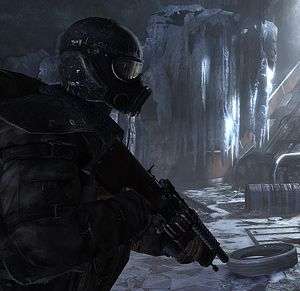 It’s all these little touches, like manually pumping up the battery for your torch, manually charging the pneumatic canister in your Helsing, and scavenging in rubbish and decaying ruins for three measly bullets, that immerse you so heavily in this game, and while you may not become heavily invested in the plight of these men and women, you’ll certainly feel like a part of their world. And it really is a ‘world’ too. You get the sense that although you’re very much confined to Moscow, the war reached much further afield than the capital of Russia. I’m not sure if the book alludes to this further but, despite trying to live following a nuclear war, Russia and Germany are still at war and are locked in a bitter stalemate underground. The Reds versus The Fourth Reich is a battle that you will have to pass through at some stage and, as a Ranger, you side with neither party. This is where one of the major issues arose when the game was originally reviewed: stealth.
It’s all these little touches, like manually pumping up the battery for your torch, manually charging the pneumatic canister in your Helsing, and scavenging in rubbish and decaying ruins for three measly bullets, that immerse you so heavily in this game, and while you may not become heavily invested in the plight of these men and women, you’ll certainly feel like a part of their world. And it really is a ‘world’ too. You get the sense that although you’re very much confined to Moscow, the war reached much further afield than the capital of Russia. I’m not sure if the book alludes to this further but, despite trying to live following a nuclear war, Russia and Germany are still at war and are locked in a bitter stalemate underground. The Reds versus The Fourth Reich is a battle that you will have to pass through at some stage and, as a Ranger, you side with neither party. This is where one of the major issues arose when the game was originally reviewed: stealth.
The simple truth is that stealth in Metro 2033 doesn’t work in the conventional sense. This is a large part of why it dropped so many points in reviews. Well, that and some frame-rate issues and bugs, which have since been patched out, but I digress. I could write a whole separate article about how no game has ever nailed stealth perfectly, but it doesn’t work in Metro within the confines of what we expect in a videogame. Usually, after firing your first silenced shot or throwing a knife at someone, everyone else will hear it. You could choose to just not kill anyone and creep round, but that would involve avoiding tripwires, dangling tin cans, and broken glass, all of which make loud noises. There is also very little scope to actually creep ‘around’ anything because of the linear nature of the game. However, I tend to think that Metro has actually got as close to perfection as videogame stealth can get.
Look at the scenario and the setting: you play a rookie, someone who can’t survive alone and isn’t very well trained; you’re using shit equipment, and are fighting against better equipped, trained soldiers. If this were based in real life, and the rookie even got this far, he’d likely get one or two shots off before the trained military chaps noticed that all their buddies were lying on the floor with claret spilling all over the deck. If you throw a knife at these guys and it hits their armour it bounces off. That isn’t a broken game, that’s just fucking logic. I don’t care if you’re the love child of Chuck Norris and Bruce Lee – you can’t make a throwing knife go through a Kevlar vest any more than I can turn water into wine. So, because of its almost-broken nature, it really seems to compliment the circumstances behind the game. If I was supposed to be the star of a Tom Clancy game or a master assassin, I’d fully expect to be able to carve someone’s heart out with a spoon in front of their mum and dad, without them being any the wiser, but I’m not, so it’s going to be sloppy, panicked and full of errors.
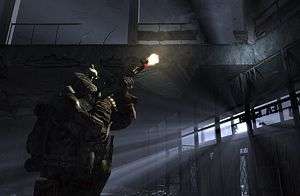 I threw a knife at a soldier’s neck, he turned at the last moment, and it hit the rear of his metal helmet instead. The knife made a ‘clang’ noise as it hit his helmet, another ‘clang’ noise as it hit the metal stairs he was standing on, and another few ‘clangs’ as it dropped down the steps. He heard it (he probably felt something too) and so did his four mates. I didn’t sit there and curse the ‘broken stealth system’ – I cursed my inability to throw knives and hastily pulled out my machine gun (that had three bullets with which to kill five people). I appreciate the game has been patched a couple of times since release, but this system, even if slightly shonky, really does work.
I threw a knife at a soldier’s neck, he turned at the last moment, and it hit the rear of his metal helmet instead. The knife made a ‘clang’ noise as it hit his helmet, another ‘clang’ noise as it hit the metal stairs he was standing on, and another few ‘clangs’ as it dropped down the steps. He heard it (he probably felt something too) and so did his four mates. I didn’t sit there and curse the ‘broken stealth system’ – I cursed my inability to throw knives and hastily pulled out my machine gun (that had three bullets with which to kill five people). I appreciate the game has been patched a couple of times since release, but this system, even if slightly shonky, really does work.
Metro 2033 is almost four years old but it still looks and sounds the part. I’ll certainly admit it looks a tad rough around the edges, but this is still one gorgeous game and the detail on the guns and character models in particular has stood the test of time well. The real credit goes to the audio though, which is where Metro certainly shines. Everything has got a noise, every action a sound that reverberates through tunnels and passageways, whether it be the reloading and cocking of a gun, the shuffling noise of sticking on your gas mask, or the slow squeeze of recharging your torch. Couple that with the authentic Russian voice work and the constant grumble of something lurking somewhere, and you start to get the impression that the audio designers had plenty of fun with this project.
There is plenty I haven’t touched on: the constant fear when you’re on the surface, and the difficulty in actually fighting something while worrying about your health, your oxygen supply and your ammo count, for example. I’ve purposefully avoided talking about the specific weapons and the bulk of the story for spoiler reasons; when it comes to the weapons, especially, I think it’s better to live with mistaken purchases than be forewarned. The game has very little in the way of a tutorial or hand holding and it’s a better game for it. Metro 2033 is best described as a terrifying trial by fire, in a world that doesn’t often provide second chances, but seeing as Artyom is fighting for a second chance for the entire human race, you would be a fool to not give him a hand.
Last five articles by Chris
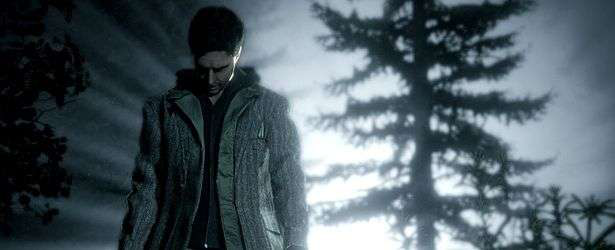

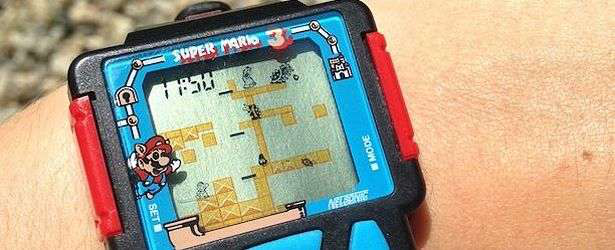











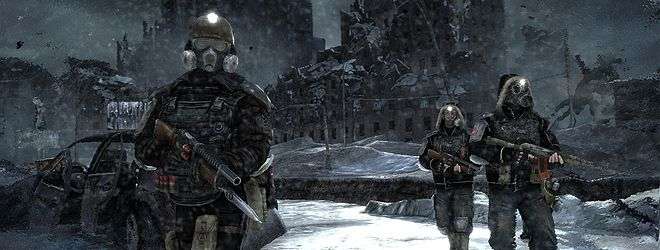
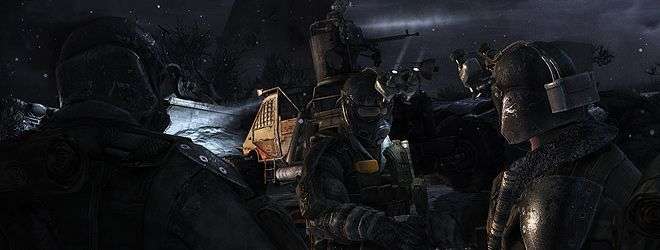
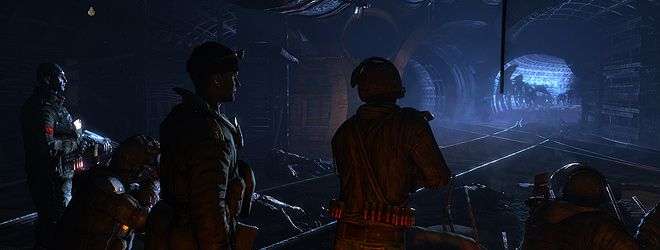
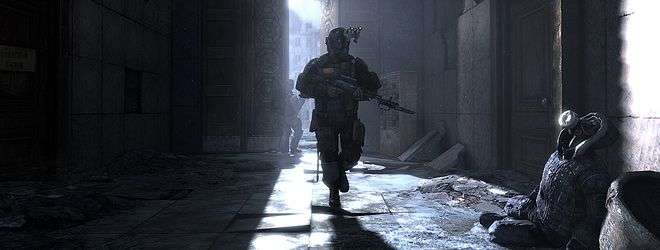





While I’d argue sequel Last Light is the better game, 2033 possesses the stronger tone and vision, despite and sometimes because of its faults like you say. It’s a shame neither ever quite got the recognition they deserved, but hopefully Metro Redux will change that.